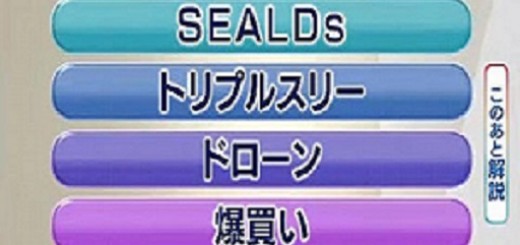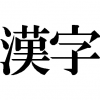Particle – “に(ni)”, “で(de)” and “へ(he)”
In this session, let’s study particles relating with place, “に(ni)”, “で(de)” and “へ(he)”.
You can use these particles in case you want to ask someone the direction to your destination or in case you explain the place where you are. Ok, let’s start!
“に(ni)”
① Location
The particle “に(ni)” indicates the location of objects. It is equivalent to “at” or “in” in English.
Ex a)
公園に鳥がたくさんいる。
(kouen ni tori ga takusan iru)
“に(ni)” indicates object(tori) stays in the place(kouen). In English, this means “There are many birds in the park.”
② Destination
The particle “に(ni)” indicates the destination of a motion verb. It is equivelent to “to” in English.
This can be replaced by “へ(he)”.
Ex b)
ローリングストーンズがシンガポールに来る。
(Rolling stones ga Singapore ni kuru)
“に(ni)” indicates the destination of a motion verb. In English, this means “Rolling Stones will come to Singapore.”
③ Point in time
The particle “に(ni)” indicates a point in time. It follows the time expressions, which is like “at”, “on” or “in” in English. However, “に(ni)” usually does not follow the time words which work as adverb, such as “today” “next week”
Ex c)
7時に会いましょう。
(shichiji ni aimashou)
“に(ni)” indicates point in time. In English, this means “Shall we meet at 7 o’clock?”
However,in case ” Shall we meet today?” in English, usually we do not use “に(ni)”.We say “今日会いましょう。(kyou aimashou)
④ Indirect object
The particle “ni” indicates its preceding word or phrase as an indirect object in the sentence. Indirect object is object related with someone. On the contrary, “Wo” indicates direct object.
Ex d)
私に辞書を貸してください。
(watashi ni jisho wo kakashite kudasai)
“に(ni)” indicates “watashi” is indirect object in this sentence. “wo” indicates “jisho” as direct object. In English this means “Please lend me the dictionary.”
“で(de)”
① Place
The particle “de” indicates the place where an action takes place or an event occurs. It is equivalent to “in” or “at” in English.
Ex e)
私はジャカルタで育った。
(watashi wa Jakarta de sodatta)
“で(de)” indicates the place where an action(sodatta) takes place. In English this means “I was grown in Jakarta.”
② Means
The particle “de” indicates the means for doing something. It is euivalent to “by” or “with” in English
Ex f)
箸でごはんを食べる。
(hashi de gohan wo taberu)
“で(de)” indicates the means(hashi) for doing something. In English this means “I eat rice using chopsticks.“
③ Cause
The particle “de” indicates the cause. It is euivalent to “because of ” in English
Ex g)
雨でゴルフが中止になった。
(ame de golf ga chuushi ni natta)
“で(de)” indicates the cause (ame). In English this sentence means golf was cancelled because of rain.
“へ(he)”
Direction of motion
The particle “へ(he)” indicates the direction of motion verbs. It is equivalent to “to” in English. It can be replaced by “ni”. Pronounciation for へ is not “he” but “e” if “へ” is used for particle.
Ex h)
私は今週末にジョグジャカルタへ行きます。
(watashi wa konsyuumatsu ni Jogjakarta e iki masu)
“へ(he)” indicates the direction(Jogjakarta) of motion verbs(iku). In English this means “I will go to Jogjakarta this weekend.”
Points
“に(ni)” has location, destination, point in time and indirect object.
“で(de)” has place, means and cause.
“へ(he)” is used mainly for destination for motion.
These particles are similar but used in different way. Learn with example.
How was this post?
If you like this or feel this is useful, please share on Facebook and retweet on Twitter!
If you wanna join Leo Sensei’s group on Facebook, click Facebook mark on top or bottom and send friend request to me. You can get updated information and ask me freely about Japanese language and culture and so on.


















